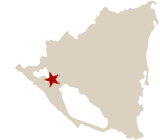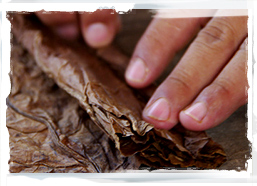An Introduction to Nicaragua
The largest of the Central American isthmus republics, Nicaragua is also the second poorest country in the Western Hemisphere after Haiti. Physically it is divided into three major zones: Pacific lowlands, wet, cooler central highlands and Caribbean lowlands. The country has the region's two biggest lakes, a number of active volcanoes and strong biological diversity. See full country profile.Latest Research News from Latin America

GOVERNMENT: Presidential constitutional republic
AREA: 130,370 sq km
POPULATION: 5,891,199 (2010 Census)
MAJOR LANGUAGE: Official Language: Spanish. Recognised regional languages include Miskito, Rama and Sumo

Some business and general info
The Market Research Industry
Trade and Industry in Nicaragua
The coast was ceded to Nicaragua in the mid-19th century, except for a northern section given to Honduras. Around the region's principal city of Bluefields, English is widely spoken today alongside the official Spanish, and the atmosphere is more typically Caribbean than in the rest of Nicaragua.
Go to next country
The largest of the Central American isthmus republics, Nicaragua is also the second poorest country in the Western Hemisphere after Haiti. Physically it is divided into three major zones: Pacific lowlands, wet, cooler central highlands and Caribbean lowlands. The country has the region's two biggest lakes, a number of active volcanoes and strong biological diversity.
Spanish from the early 16th century, it was independent in 1821 and has led an unsettled existence since, with political unrest, dictatorship (most famously the Samoza dynasty from 1936-1979), US intervention and natural disaster all playing a part.Prior to revolution in the 1960s it was one of the region's wealthier countries. Following civil war between Sandanista revolutionaries and US-funded 'Contras' in the 1980s, the country was left with devastated infrastructure, impoverished and exhausted, with 16,000% inflation. In 1990, with massive US backing, Violeta Chamorro became the second democratically elected female president in the western hemisphere, but after a succession of short-lived presidents the country in 2006 once again 'chose' (with 38% of the vote sufficing for his election) Sandanista / FSLN leader Daniel Ortega, who remains in power today after re-election in 2011.
GDP: $18.8bn (2011 est); $3,072 per capita
Religions Roman Catholic 58.5%, Protestant 23.2% (Evangelical 21.6%, Moravian 1.6%), Jehovah's Witnesses 0.9%, other 1.7%, none 15.7% (2005 census)
Currency: Nicaraguan Córdoba - 1 NIO = $0.043
Telephone Code: +505
The country suffers from widespread underemployment, currently at 46.5%. Political instability has depleted the manufacturing base and has also limited the mining of both gold and copper. The current government is trying to change the industrial mix of the country and achieve decentralization away from Managua where previously over 60% of industri'l output by value was generated.
The US-Central America Free Trade Agreement (CAFTA) was signed in 2006 and has helped with the export of both agricultural and manufactured goods.
Textiles and clothing account for nearly 60% of Nicaragua's exports, but recent increases in the minimum wage may erode the country's advantage over Asian competitors. Other exports include coffee, beef, shrimp and lobster, tobacco, sugar, gold, peanuts, cigars and automobile wiring harnesses. Main export partners were the US (32% in 2007),El Salvador (14%) and Honduras (9.3%). Imports include consumer goods, machinery and equipment, raw materials and petroleum products coming from the US (22.5% in 2007), Mexico (13.5%) and Costa Rica (8.4%) among others. Total exports in 2009 were $2.34bn; imports were $3.97bn.
Email me:
laurence@mrweb.com

